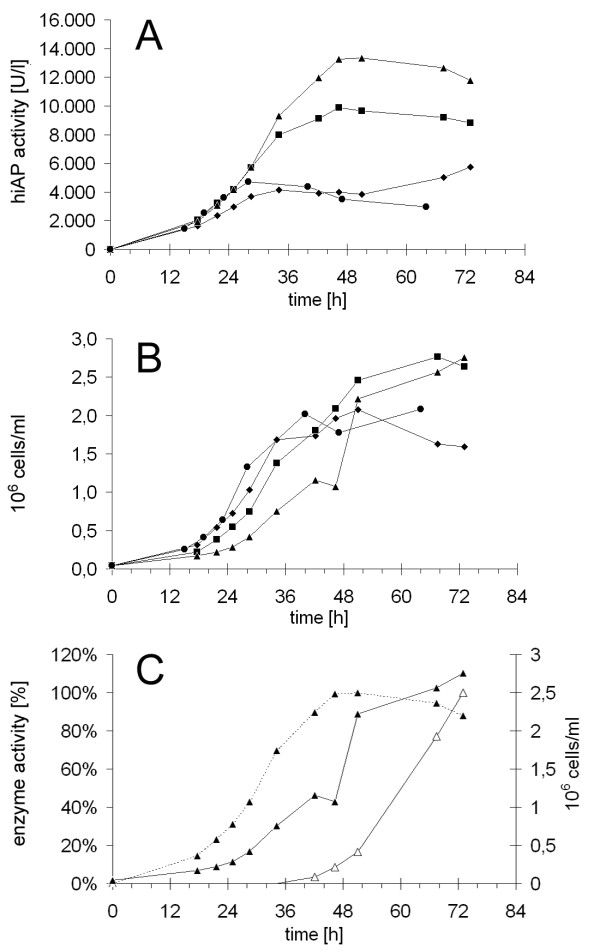Figure 5.
Analysis of hiAP secretion in T. thermophila cultures. Using the Sixfors bioreactor we analyzed four 500 ml cultures that secrete hiAP without GPI in parallel. The figure shows the activity of extracellular hiAP (A) and the growing curves (B) of four independent fermentations. The cultures were induced with 10 μg/ml (circles, squares, rhombuses) or 15 μg/ml (triangles) cadmium chloride at the beginning of the experiment. Two cultures (triangles, squares) were fed with 10 times concentrated SPP medium at a rate of 2 ml/h. The maximum hiAP activity in the fed cultures (triangles, squares) was reached after 48 h whereas the maximum in the non-fed cultures was reached after 30 h. The fed culture reached about two times more hiAP activity (9,000 U/liter) compared to the unfed culture (4,500 U/liter). The induction with 15 μg/ml cadmium chloride instead of 10 μg/ml together with continuous feeding led to a further 1.5fold increase of the extracellular hiAP activity (14,000 U/liter). In a further fermentation we analyzed the secretion efficiency and compared the hiAP secretion rate to the secretion rate of the endogenous beta-glucosidase (C). The culture grew to a final titer of 2.8 × 106 cells/ml (solid line, closed triangles). The beta-glucosidase activity started to increase after 36 h until the end of the fermentation (solid line, open triangles) whereas the hiAP activity only increased in the first 48 h of the cultivation reaching a stable level until the end (dashed line, closed triangles), suggesting that the secretion efficiency of the culture and the viability was not influenced by cadmium.

